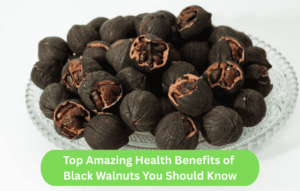
How to Choose the Best Fresh Fruits: A Complete Buying Guide for Your Health

Introduction
To eat healthily, you need to eat lots of fresh veggies. They help your body stay healthy by giving you vitamins, minerals, antioxidants, and proteins. However, not every fruit in the store is of the same high quality. The best way to get the most health benefits from fruits is to pick ones that are fresh, ripe, and full of nutrients. We will discuss about How to Choose the Best Fresh Fruits: A Complete Buying Guide for Your Health with this Primenuts Blog.
1. Check for Freshness and Firmness
To choose the best foods, one of the first things you should do is make sure they are still fresh. If a fruit has bruises, cuts, or soft spots, it may be too ripe or about to go bad. Fruits should be firm but not too hard, depending on the type. For instance, pears and apples should be a little hard, while peaches and mangoes should be able to give a little when gently pressed. The taste, appearance, and nutritional value are all affected by how fresh something is.
2. Examine the Colour and Appearance
Colour is a natural indicator of ripeness and nutritional quality. Bright, vibrant colours often indicate that the fruit is full of antioxidants and nutrients. For instance, deep orange mangos or rich red strawberries are typically ripe and flavourful. Avoid fruits with dull, faded, or brown patches, which may suggest over ripeness or poor handling. Uniform colouring and healthy skin are signs of quality fruit.
3. Smell the Fruit for Aroma
A fresh fruit’s aroma can tell a lot about its ripeness. Ripe fruits often emit a sweet, fragrant scent, while unripe or stale fruits may lack aroma. For example, bananas should have a mild, sweet smell, and melons like cantaloupe or watermelon should have a pleasant, fruity fragrance. A strong, sour, or fermented smell can indicate over ripeness or spoilage. Using your sense of smell is a natural way to select quality produce.
4. Consider the Seasonality
Seasonal fruits are generally fresher, tastier, and more affordable. Eating fruits in their natural season ensures they are harvested at peak ripeness and are richer in nutrients. For example, oranges are best in the winter; mangoes in the summer; and berries in the spring or early summer. Choosing seasonal fruits also supports local farmers and reduces the environmental impact of transporting out-of-season produce from distant regions.
5. Check for Organic or Pesticide-Free Options
Whenever possible, choose organic or pesticide-free fruits. Conventionally grown fruits may contain chemical residues that can affect health over time. Organic fruits are grown without synthetic pesticides, fertilisers, or genetically modified seeds. Washing all fruits thoroughly before consumption is essential, but organic options reduce exposure to harmful chemicals and make your diet safer and healthier.
6. Feel the Weight and Texture
Heavier fruits usually indicate juiciness and freshness. For instance, a watermelon should feel heavier than it looks, suggesting it’s full of water and sweetness. Similarly, oranges and grapes with a firm texture and slight springiness are signs of freshness. Avoid fruits that feel too light, shrivelled, or dry, as they may be old, dehydrated, or less flavourful. Texture is a key factor in enjoying fruits at their best.
7. Inspect for Signs of Mold or Spoilage
Before buying, always inspect fruits carefully for any signs of mould, discolouration, or unusual spots. Soft patches, white fuzz, or darkened areas may indicate fungal growth or spoilage. Mouldy or damaged fruits should be avoided, as they can affect the taste and even pose health risks. A quick visual check can save you from buying subpar or unsafe produce.
8. Buy in Small Quantities When Possible
Fresh fruits are best consumed quickly after purchase, as their nutritional content decreases over time. Buying in small quantities ensures you consume fruits at peak freshness and avoid waste. If you want to store them, consider refrigerating fruits like berries, grapes, and apples, while keeping tropical fruits like bananas and mangoes at room temperature until they’re ripe. Proper storage maintains quality and extends shelf life.
9. Support Local Farmers and Markets
Buying fruits from local farmers’ markets ensures you get fresher produce and seasonal varieties. Local fruits often require less transportation, reducing carbon footprint and environmental impact. Supporting local agriculture also strengthens the community economy and encourages sustainable farming practices. Freshness, taste, and nutrient content are usually better in locally sourced fruits compared to long-distance transported ones.
10. Trust Your Instincts
Finally, trust your senses and instincts when selecting fruits. Sight, smell, touch, and even taste (if permitted at the store) can guide you to the best-quality fruits. Over time, you’ll develop an eye for ripe, fresh, and flavourful fruits. Combining your knowledge of seasonality, appearance, and texture with natural instincts ensures that your fruit selection is both healthy and enjoyable.
Conclusion
Choosing the best fresh fruits is not just about taste—it’s about maximising nutrition and supporting overall health. Checking for freshness, colour, aroma, texture, and seasonality, you can make informed choices for your family. Organic options, local produce, and small purchases further enhance the quality and safety of your fruits.
Incorporating various fresh fruits into your daily diet boosts immunity, digestion, and energy levels while providing essential vitamins and minerals. Following this complete buying guide ensures that every fruit you select is fresh, nutritious, and delicious—helping you lead a healthier, more vibrant life.



